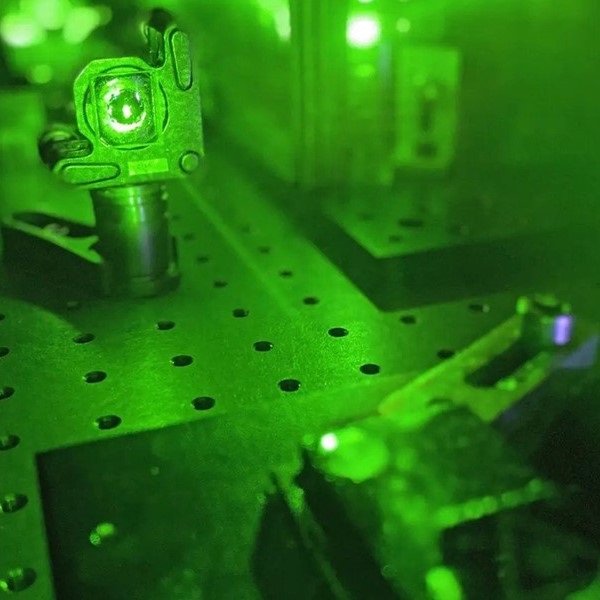A system for finding new, Earth-like planets using a simple laser has been developed by researchers at Heriot-Watt University.
The laser emits light at one billion pulses per second and comprises just two mirrors and a sapphire crystal containing a small amount of titanium.
It is powered by a green laser similar to the laser pointers found in shops for under £5, which converts the light into infrared pulses with peak powers of one kilowatt.
The researchers estimate that it reduces the cost, complexity and power consumption of typical ultrafast lasers by around a factor of 10, which makes it more accessible to users in other scientific disciplines.
“Using space telescopes, astronomers have already identified thousands of stars that might have exoplanets, but each of these must be confirmed by ground-based telescopes looking for tiny fluctuations in the colour of the star’s light that are the signatures of an orbiting planet,” said Professor Derryck Reid, head of the Ultrafast Optics Group at Heriot-Watt University.

“These tiny wavelength shifts confirm the presence of an orbiting planet and provide its mass and orbital period.
“Our new laser is a smaller and simpler version of one we installed on the 10-metre Southern African Large Telescope in 2016.
“The laser produces light consisting of thousands of regularly spaced optical frequencies, known as a frequency comb. Much like a ruler is used to accurately measure distances, a frequency comb is a ‘wavelength ruler’, allowing astronomers to measure exact wavelength differences.
“Since observations of exoplanets can take years of observation time, astronomers have suggested having many dedicated telescopes pointing at candidate stars, and our laser could become a core module in such systems.”
Heriot-Watt PhD student Hanna Ostapenko came up with the new design.
“What’s unique about this laser is that we’ve shown we can power it from a simple laser diode – about the same energy consumption as an iPhone,” she said.
Ostapenko has been developing this and related lasers for three years. Making it compact, robust and capable of turnkey operation was one of her objectives.
“Unlike many previous ultrafast lasers, ours contains very few components and produces ultrafast pulses as soon as it powers up.
“Having fewer components makes it more mechanically stable. Making systems immune to vibration opens up the laser to different uses like navigation applications on satellites.”
Source: E&T










